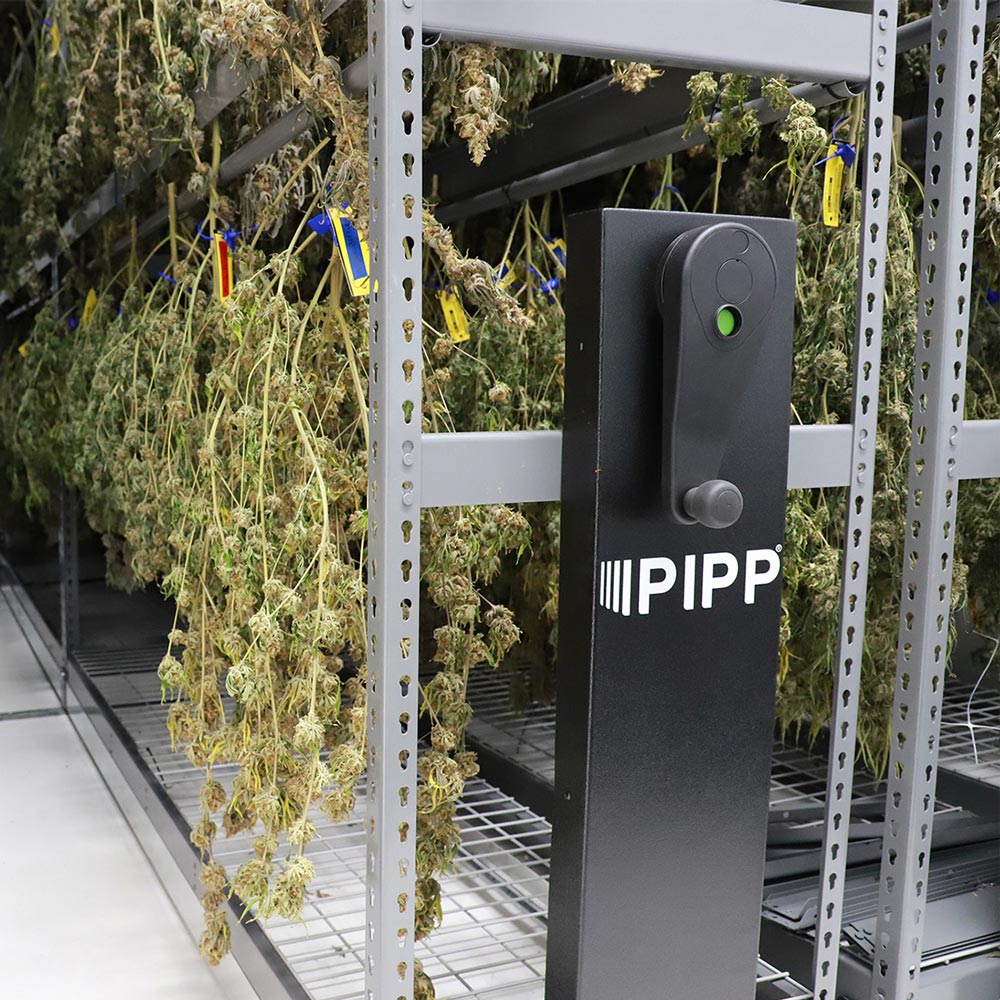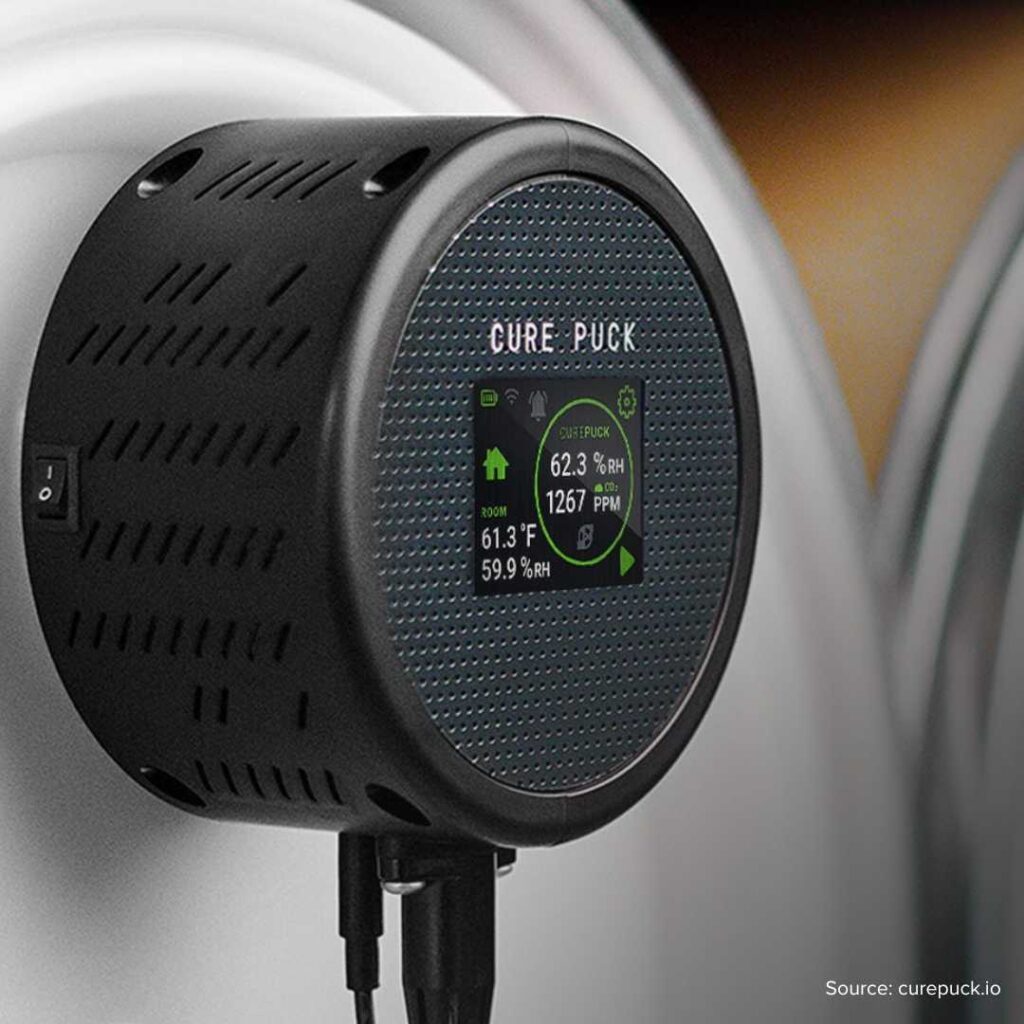The Art & Science of Curing Cannabis: Owning Your Moisture Handoff
Let’s cut to the chase: dial in every grow‑room parameter you’ve got—VPD, lighting, CO₂—and you can still watch your margins evaporate when you drop the ball on post‑harvest.
It’s almost a philosophical question in the grow facility: “When does drying end and curing begin?” And it sounds simple.
It isn’t.
Why the Dry‑to‑Cure Split Defines Quality
Drying isn’t an afterthought. It’s your first line of defense against mold and the checkpoint where flavor and potency take shape.
Drying is a rapid decrease in moisture content, taking cannabis from a live, fully hydrated plant to a state where the majority of the moisture is reduced in the bud. Nail that, and you halt botrytis by hitting ~0.8 aw. Push past ~0.6 aw, and you kill off the enzymes that unlock complexity.
Curing isn’t just letting buds sit in a jar. Curing homogenizes the moisture content of the inflorescence or flower. But other things are going on than just the normalization of moisture.
It’s where chlorophyll breaks down, terpenes emerge, and—even after enzymes shut off—ethylene gas continues to dance through your colas.
Drying Fundamentals: Beyond “Crispy on the Outside"
Feel‑testing (“crispy outside, wet inside”) still reigns in some craft circles. But consistency demands data. Facilities lean on loss‑on‑drying balances to measure moisture by weight loss. Sample multiple bud sizes and cultivars, because dense colas and wispy popcorn flowers never dry at the same rate.
Aim for roughly 11.7 % moisture content (with an acceptable range of 11.2–12 %) before you send product into a trim machine. Too wet, and machine blades mulch your investment; too dry, and you’re dust in the wind.

Curing Chemistry: Chlorophyll, Enzymes, and Ethylene
You’ve smelled that grassy, hayish green note when buds first hang.
Over-curing, it fades—and that’s chlorophyll degradation at work. Once those molecules break down, your accurate terpene profile bursts forth.
But here’s the rub: most enzymatic activity grinds to a halt around 0.6 aw, yet cannabis continues to emit ethylene, a ripening hormone more often associated with bananas and tomatoes. This is something of a question mark; why does ethylene keep flowing when other processes have shut down? Could a controlled ethylene dose accelerate your cure?
It’s an experiment begging for a small‑batch trial.

Precision Tools: From Moisture Analyzers to VPD Sensors
You’re missing the point if you’re still quoting 65 °F at 60 % RH. Vapor‑pressure deficit (VPD) drives moisture migration far more reliably than RH alone.
Fit dry rooms, cure spaces, and even hallways with VPD‑capable sensors that log absolute humidity (grains of water per pound of air).
Use those readings to trigger your “burp” cycles, rather than chasing a static RH%. Match the microclimate as the product moves from the dry rack to the trim bench—every door crack invites moisture swings that can undo days of careful work.
Automating Your Burps: Lid Cracks vs. Curepuck
The classic bucket‑and‑burp routine: seal buds in a five‑gallon gamma‑seal bucket, let internal moisture equalize, then release it by cracking the lid daily. Over time, that gentle moisture purge homogenizes the bud and preserves shelf life.
But what if you don’t have time for daily lid rituals?
Enter auto‑burp systems like Curepuck and breathable liners (Grove Bags). These devices open and close micro‑valves based on absolute humidity thresholds—no human in the loop. Consistency scales, and your team can focus on higher‑value tasks.
Integrating Post‑Harvest Spaces: From Dry Room to Hallways
Some producers treat the entire dry room as one giant cure jar, adjusting T/RH and cycling exhaust fans instead of individual jars. It works—until you forget about the staging hall or the bucking room. Even nested totes in a humid hallway will rehydrate buds.
Pyramid‑stack your clean vessels upside‑down on a sanitized floor or plastic sheeting. Match VPD from rack to jar, trim room to storage tote. Every square foot must live to the same spec.
Actionable Insights for Your Operation
- Calibrate your moisture analyzer weekly. Track both moisture content (%MC) and water activity (aw) for every cultivar.
- Deploy VPD sensors in every post‑harvest zone—from dry rack to pack line.
- Run an ethylene trial in a dedicated barrel—document aroma and terpene shifts.
- Automate your burps or codify a daily lid‑crack ritual with gentle rotation.
- Map your microclimates—don’t let hallways or trim bays become blind spots.
Control that split‑second transition, and you’ll lock in flavor, potency, and shelf life, turning every square foot of your post‑harvest real estate into profit.

